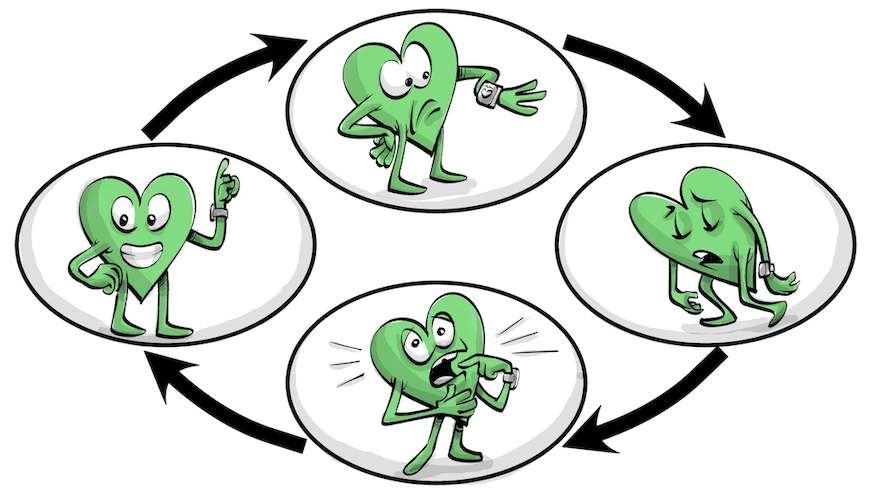

Reflect on the usefulness of both of the tools. How would you apply the two tools in your daily life? Use two concrete examples for each tool (4 total examples). Be specific, concrete, and original (absolutely no copying and pasting). Emphasize your role, but do not forget that the tools have little meaning for only one of the individuals involved.
This week we learned about two powerful tools, the SCARF model and Non-violent Communication. The SCARF model covers factors that affect positive or negative responses in social situations and involves 5 key “domains” that influence our behavior: status, certainty, autonomy, relatedness, and fairness (Rock D., 2008). Let me tell you a bit more about all of them. Status is about our relative importance to other people in the social situation. Our status can affect the mental process in many ways, and it is important to understand when others feel a threat of the status (which can happen after giving instructions, advice, or suggestions to a slightly ineffective worker) and when others can see it as a reward (for example, when they can get praised or promoted).
Certainty refers to our ability to predict the future and creating a sense of certainty can be rewarding. Nobody really enjoys uncertainty as soon as it can be scary and becomes a threat – when you do not know, what to expect, the situation can go beyond your control. In the business setting, it is important to increase a sense of certainty to keep attention on the goals. When we speak about autonomy, we mean the perception of control over our actions and the feeling of having choices. Usually, when we work in teams, our autonomy is reduced, but then we have the roles of status and certainty increased. It can be extremely difficult to provide a great level of autonomy in the company, but people generally feel better when they have some. It can be provided, for example, by letting them manage their working hours, desks, workflow, etc. Relatedness is about how safe we feel among others, and if we are part of a group. In the modern world, where globalization is making it possible to work in international teams, it is even more important to feel related. Positive connections are one of our top needs, even though sometimes we fear creating new ones. At work, it would probably be better to create small groups instead of big ones, as soon as usually people feel safer in the small ones. Finally, fairness is about how we perceive the exchanges – are they fair or not? People who feel that somebody is unfair do not feel empathy for them and can even be happy when those are punished. Therefore, we need to have clear expectations, clear ground rules, and objectives. Using these 5 domains, SCARF explains to us how they activate threat and reward responses in our brain, and how to use them efficiently to achieve the result we need.
Knowing this model, I can use 5 domains to motivate myself more effectively in my daily life. For example, I can eliminate status threats at work: when I want to give feedback or advice, I must be gentle and do it in a more positive way. If I see, that one of my colleagues is making a mistake, I can kindly suggest evaluating this himself or herself first, and then give my suggestions on a positive note. I can also maximize the reward of certainty by discussing my plans and ideas with those colleagues I work with on the same thing. They will know what to expect and we will set the direction, therefore, everybody will be able to keep on track and will feel safer.
Non-Violent Communication, as we can see from its name, is about communicating from the heart and being nonviolent. It is a powerful tool for understanding what exactly we experience and feel, what we want to ask other people and ourselves, and what values we have and want to live by (NVC, n.d.). The domains it covers are consciousness, language, means of influence, and communication. While SCARF is explaining to us more about processes happening in our brain and how to change the perception of the situation and, therefore, our behavior, the NVC is trying to explain the feelings of people and teaches us how to communicate and remain human under any conditions.
The NVC can be helpful in all levels of communication, and in my daily life, I would use it at home with my family and at work. For example, I can listen and observe my mother when she says something I don’t really want to hear. It will help me to understand, what feelings are hidden under her words and behavior, and therefore I will be able to solve the issue without any argument with her. Or, when some kids misbehave at work, instead of becoming mad at them I can avoid being frustrated and simply discover why they do this and why I feel like this. A different approach can help me not only to remain calm but also to change the child’s behavior.
References
Rock, D. (2008). SCARF: A brain-based model for collaborating with and influencing others. NeuroLeadership Journal, 1. Retrieved from http://web.archive.org/web/20100705024057/http://www.your-brain-at-work.com/files/NLJ_SCARFUS.pdf
NVC. (n.d.). What is Nonviolent Communication? Retrieved from https://www.cnvc.org/learn-nvc/what-is-nvc
